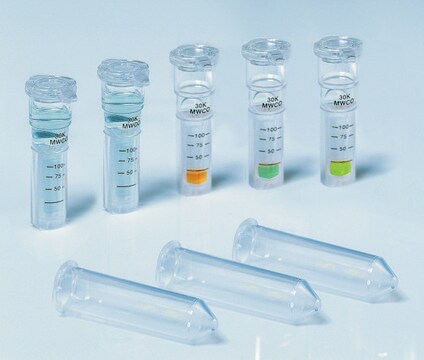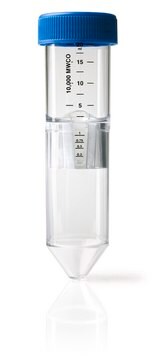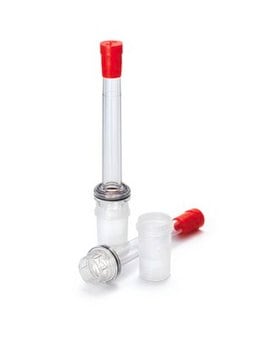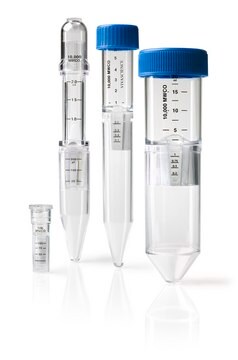13239E
Centrisart® I centrifugal ultrafiltration unit
MWCO 10 kDa
About This Item
Prodotti consigliati
Materiali
polystyrene housing
polystyrene outer tube
polysulfone membrane
Sterilità
non-sterile
Confezionamento
pack of 12 tubes
Produttore/marchio commerciale
Sartorius 13239E
Parametri
2000 × g max. force (fixed angle)
2500 × g max. force (swinging bucket)
Superficie filtrante
0.79 cm2
Largh. × lungh. tubo campione esterno
14 mm × 93 mm
Dimens. tubo
~15 mL
Volume d’esercizio × volume concentrato
2.5 mL × 100
Dimensione pori
10 kDa MWCO
Cerchi prodotti simili? Visita Guida al confronto tra prodotti
Descrizione generale
Filters: cellulose triacetate or polysulfone.
- Centrisart® I centrifugal ultrafiltration unit is ideal for the separation of small-volume proteins from low molecular weight substances in biological samples.
- The unit works in the direction opposite to centrifugal force which prevents premature filter blockage.
- This versatile device is utilized in both fixed-angle or swinging-bucket rotors that hold standard 15 mL tubes.
- The product is collected in the easily accessible floater insert tube.
Applicazioni
- Protein removal from blood samples
- Drug binding studies
- Cleaning of liposomes (cell lysates)
Note legali
Scegli una delle versioni più recenti:
Certificati d'analisi (COA)
It looks like we've run into a problem, but you can still download Certificates of Analysis from our Documenti section.
Se ti serve aiuto, non esitare a contattarci Servizio Clienti
Possiedi già questo prodotto?
I documenti relativi ai prodotti acquistati recentemente sono disponibili nell’Archivio dei documenti.
Il team dei nostri ricercatori vanta grande esperienza in tutte le aree della ricerca quali Life Science, scienza dei materiali, sintesi chimica, cromatografia, discipline analitiche, ecc..
Contatta l'Assistenza Tecnica.






